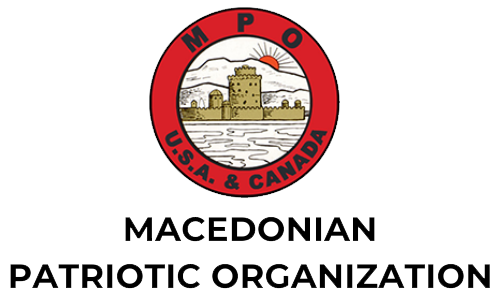Macedonian Culture
Martenista
Our rich Folk Culture
On March 1st Baba Marta (Grandma March) Day is a holiday celebrated in the Balkans which brings the end of the cold winter and the beginning of the spring. A Martenitsa is made of white and red yarn and usually in the form of two dolls, a male and female or they are made into a wrist band or tassels. It is believed that the white stands for wisdom and red for good health, which means that anyone giving you a Martenitsa is wishing you both throughout the New Year. They are worn until a stork or a blossoming tree is seen, symbolizing the coming of spring, warmer weather and the wish for good health. Once the stork or swallow appears, the Martenitsa is hung on a blooming tree.
Baba Marta Day is one of the oldest continuing traditions in Christian Europe. There are multiple versions surrounding how this holiday originated. Some believe that Baba Marta is a nice old lady who brings spring with her when she is in a good mood; but when she is unhappy, it starts to snow and the weather suddenly turns cold –March is said to be very unpredictable!


Our Orthodox
Easter Traditions
To Orthodox Macedonians, Easter is the greatest holiday of all. The Easter Lent, also called the Great Fast, starts forty days before the Great Holy Week which is the most important part of the Lent. The meaning of the fast is to strengthen spiritually, to enter in a community with God through prayer, good thoughts, righteous deeds and proper way of life. Eggs are dyed in red, symbolizing victory and coming happiness in the resurrection. The red color represents God’s might and strength. The color of the Easter eggs reminds us of the blood Jesus shed on the Cross.
On Easter Sunday after attending the mass at church, friends and families gather at homes celebrating Christ’s resurrection with a family dinner and the red colored eggs. Before the eggs are eaten, a friendly family competition ensues. Each person selects an egg and challenges another person to “crack” the egg. The competition continues one at a time and the person’s egg not cracked on either side of the egg is the winner. In addition to bragging rights, this person will have good luck for the year!
Christ is Risen! Indeed He is Risen! Hristos Voskrese! Voistina Voskrese!
The Wedding Bread Dance
The Macedonian bread dance is a favorite wedding tradition and one of the highlights of the reception. A round sweetened egg bread, called a koluk, is baked and decorated with white flowers. The bread is round, like a wedding band, to signify something that has no beginning or end. Everyone is invited onto the dance floor to join hands and dance a simple horo (line) dance, familiarly referred to as the “one, two, three, kick kick” dance.
The dance begins with the Kum (godfather) holding the bread above the married couple’s head. The entire wedding party and guests have a blast dancing the horo as the Kum holds the bread over each dancer’s head. At the end of the song, there is a traditional competition between the bride and groom. The couple moves to the center of the dance floor and each holds a side of the bread. On the count of three, the couple rips the bread apart. Whoever has the larger piece is crowned the winner, and deemed to be the head of the household.


The Lucky Coin
A New Year's Tradition
A favorite way to ring in the new year is to celebrate with family and friends. One Macedonian tradition is to hide a coin in zelnick (a pastry pie filled with feta cheese and a variety of other fillings). Each family’s celebration may be slightly different and the coin could be hidden in bread or cake, as well as the zelnick. Regardless of the food, cutting the zelnick and distributing the pieces is an important part of the tradition.
Traditionally, there is a religious aspect with the first piece cut for Christ and the second for the Virgin Mary. As you cut the zelnick, you need to ensure there are enough pieces for everyone present. Often times, pieces are set aside for family members who are away or even pets. Pieces are usually distributed in age order, either old-to-young or vice versa, depending on the family tradition. Whoever finds the coin in their piece is expected to enjoy good luck for the remainder of the year.


